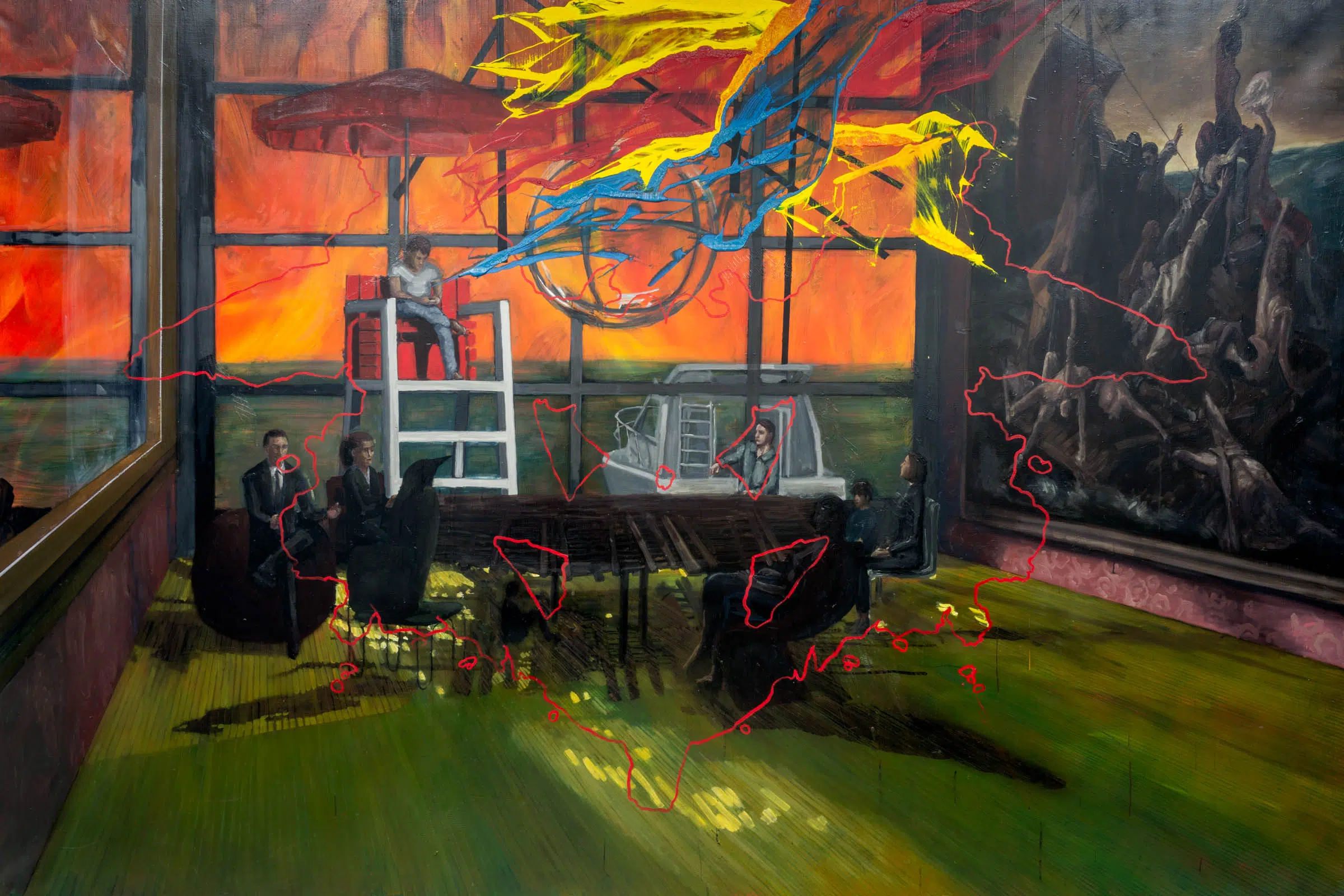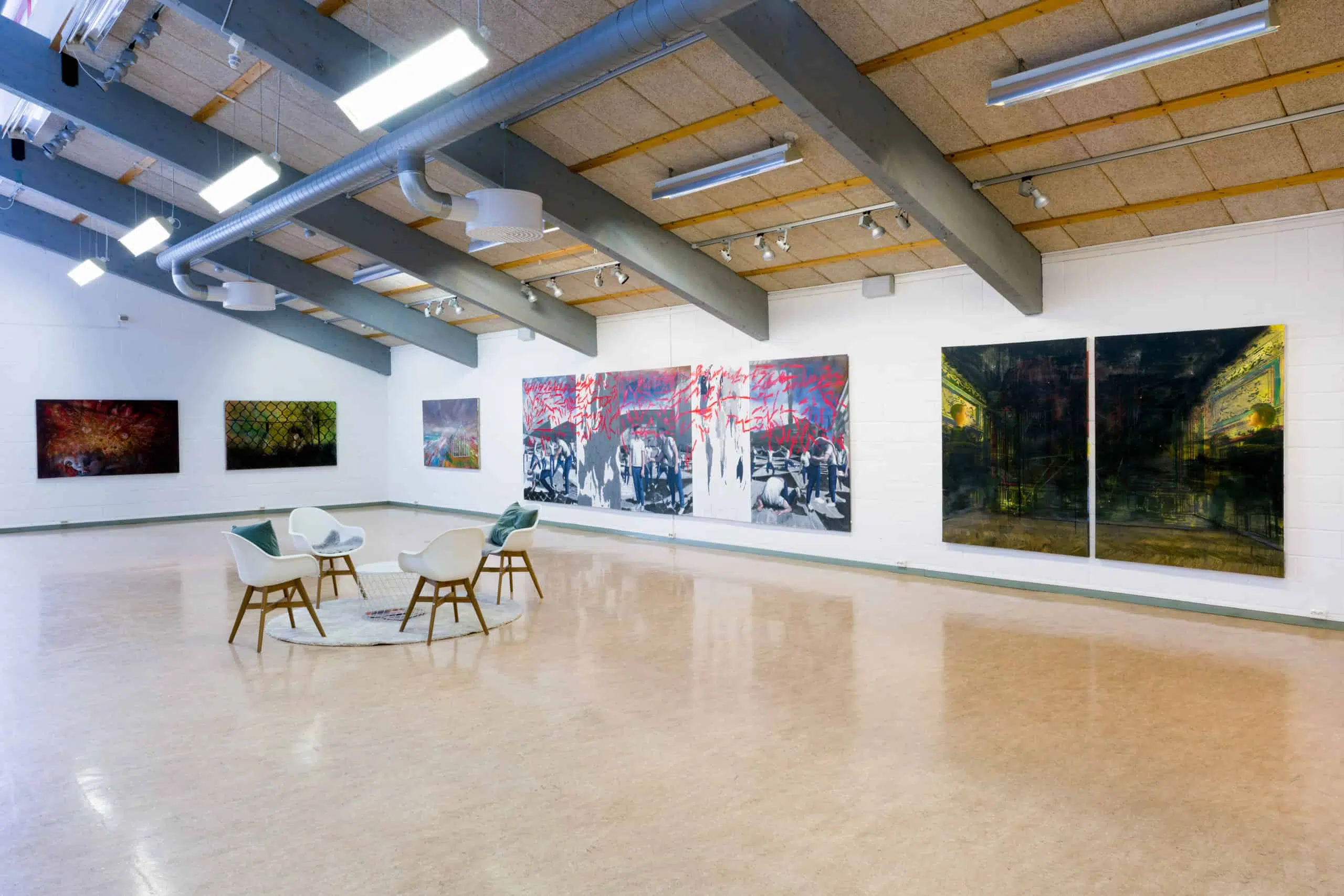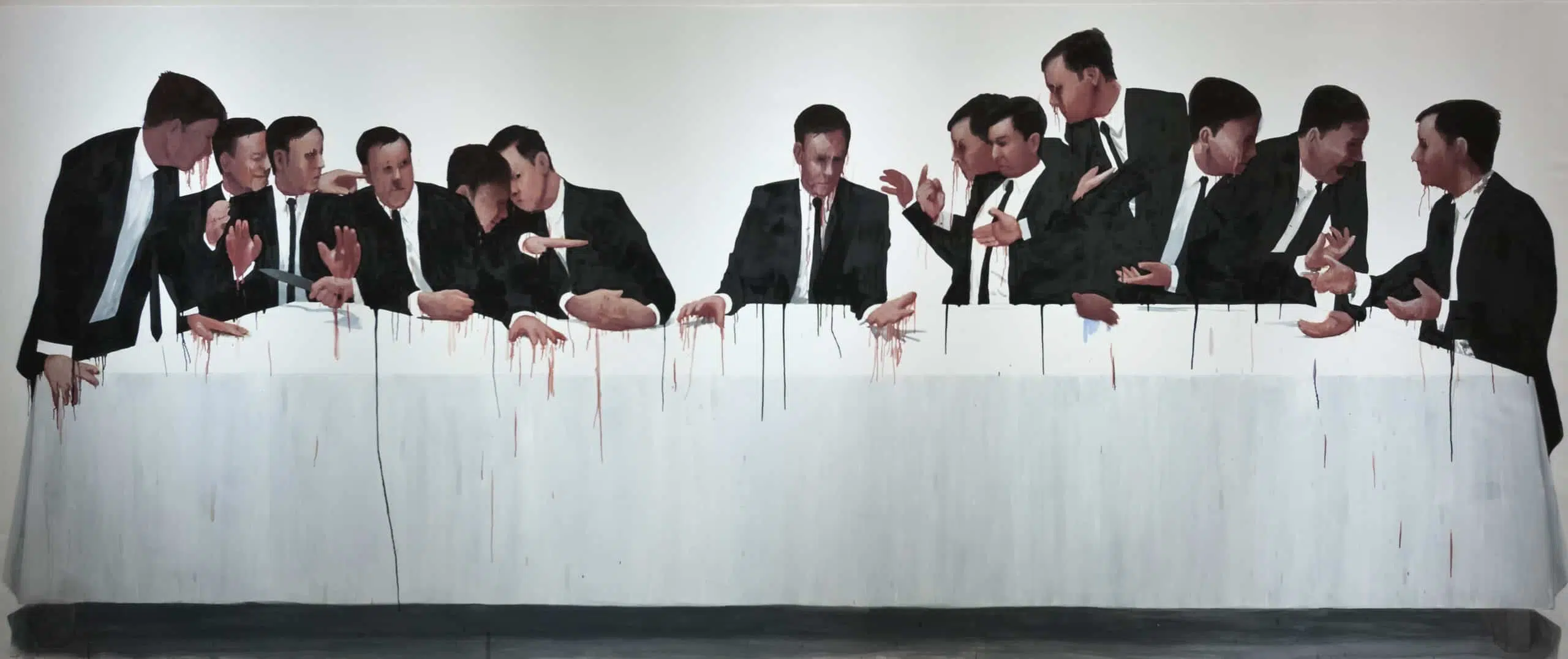Category: Reflections
Reflections on art, society, and the role of painting
In today’s fast-paced world, where technology dominates and information flows incessantly, art provides a space for reflection, slowing down our experience of time and allowing us to question the surrounding chaos. Through my practice, I explore the complex relationship between individuals and the larger society, with painting as a medium for introspection and connection. At the intersection of personal expression and collective experience, painting offers a means to examine our place in the world—where uncertainty reigns and where perspectives are constantly shifting.
The power of juxtaposition
At the heart of my artistic process lies the idea of juxtaposition. I often bring together contrasting elements, whether they are abstract shapes or more figurative representations, to highlight the tension and harmony that can arise from difference. In doing so, I create compositions that challenge the viewer to see beyond the surface, to notice how multiple, sometimes conflicting, layers can exist simultaneously. This technique serves as a metaphor for the complexities of social and political life, where multiple realities and viewpoints collide and merge into something new.
The process of layering in my paintings mirrors how our personal experiences combine with the broader social context. Each layer is significant on its own but becomes part of a larger whole, where the sum is greater than its parts. Much like in life, these overlapping images, forms, and symbols create a narrative that is rich in meaning but open to interpretation. As in conversations between individuals or communities, contrasts can serve to both highlight differences and reveal unexpected connections.
Art as a platform for dialogue
One of the central themes I grapple with is the dynamic between the individual and the collective. How does society shape us, and in turn, how do we shape society? This question is particularly relevant in today’s climate, where fear, often driven by uncertainty and a perceived loss of control, plays a pivotal role in shaping political discourse. My work seeks to examine this fear—not only as a social and political force but also as an emotional and psychological experience that touches us all.
Painting offers me a platform to explore these questions. The medium allows for a unique form of communication, one that transcends language. In my work, I aim to bridge the gap between thought and form, between internal reflection and external expression. Through the act of painting, I invite viewers to engage in a dialogue not only with the work itself but also with their own perceptions and experiences.
This dialogue extends to how we understand reality and truth. In an era where information is so easily manipulated, the very idea of objective reality feels elusive, even absurd. Through my paintings, I aim to capture this sense of absurdity, the paradox of searching for meaning in a world that often feels incomprehensible. Art becomes a way to grapple with this uncertainty, offering a space where multiple perspectives can coexist without needing to be reconciled.
The third place: Encounter and tension
A recurring concept in my work is what I call the “third place”—a space where opposing viewpoints or elements meet, and where the boundaries between them blur. This third place can be thought of as the space of human encounter, where communication happens but is never perfect, where misunderstandings are just as likely as connections. In this space, I explore how language, imagery, and experience interact, often with unpredictable results.
This concept is central to both the form and content of my work. Each painting represents a kind of encounter—a meeting between different styles, subjects, and ideas. Just as no two human encounters are the same, no two paintings in my body of work are identical. Each one is a unique project, a new exploration of how we relate to one another and to the world around us.
Pseudo-psychoanalysis: The individual and the collective
My interest in pseudo-psychoanalysis stems from a fascination with how personal and collective images shape one another. In today’s society, where collective fears and anxieties often drive political and social movements, I seek to understand how these shared experiences influence my own perceptions. What does it mean for an image to take root in the collective consciousness? How does this image then feed back into my own thoughts and emotions, and vice versa?
In this way, my paintings are as much about my own internal landscape as they are about the external world. They represent an attempt to visualize the unformed thoughts and emotions that arise in response to global trends and societal shifts. By layering my own experiences on top of collective symbols and images, I create works that are at once deeply personal and widely resonant.
Conclusion: Painting as exploration
In the end, my paintings are about exploration—of ideas, of techniques, and of the self. Through a careful process that blends planning and spontaneity, I aim to push the boundaries of what painting can do, both conceptually and technically. Each work begins with sketches and meticulous planning, but the final result often surprises even me. This process of discovery is central to my practice, reminding me that art is never static—it is always evolving, just as society and the individuals within it are constantly changing.
Through my work, I hope to contribute to a larger dialogue about the role of art in contemporary life, where the lines between reality and perception, between the individual and the collective, are continually shifting.








